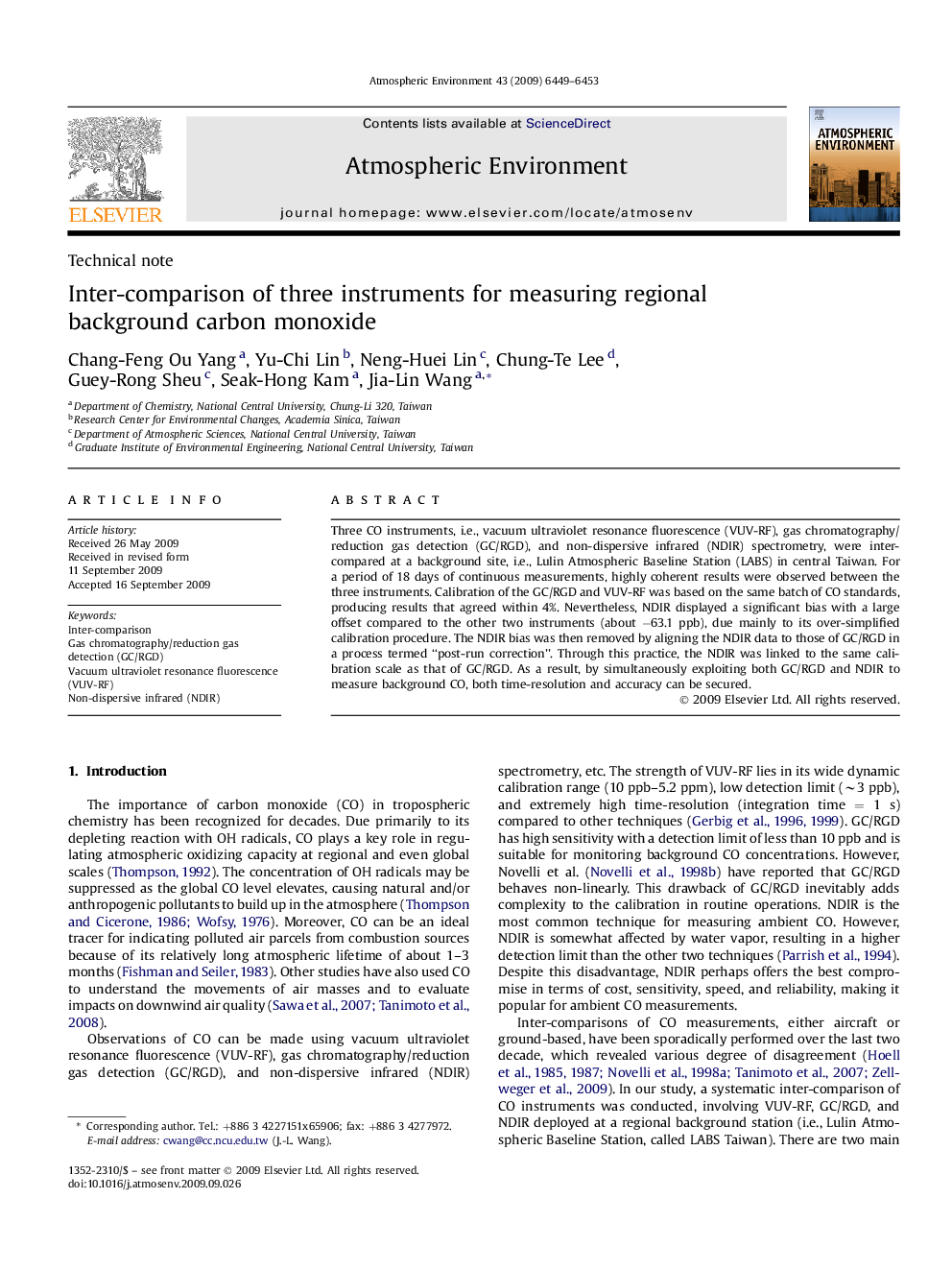| Article ID | Journal | Published Year | Pages | File Type |
|---|---|---|---|---|
| 4441008 | Atmospheric Environment | 2009 | 5 Pages |
Three CO instruments, i.e., vacuum ultraviolet resonance fluorescence (VUV-RF), gas chromatography/reduction gas detection (GC/RGD), and non-dispersive infrared (NDIR) spectrometry, were inter-compared at a background site, i.e., Lulin Atmospheric Baseline Station (LABS) in central Taiwan. For a period of 18 days of continuous measurements, highly coherent results were observed between the three instruments. Calibration of the GC/RGD and VUV-RF was based on the same batch of CO standards, producing results that agreed within 4%. Nevertheless, NDIR displayed a significant bias with a large offset compared to the other two instruments (about −63.1 ppb), due mainly to its over-simplified calibration procedure. The NDIR bias was then removed by aligning the NDIR data to those of GC/RGD in a process termed “post-run correction”. Through this practice, the NDIR was linked to the same calibration scale as that of GC/RGD. As a result, by simultaneously exploiting both GC/RGD and NDIR to measure background CO, both time-resolution and accuracy can be secured.
